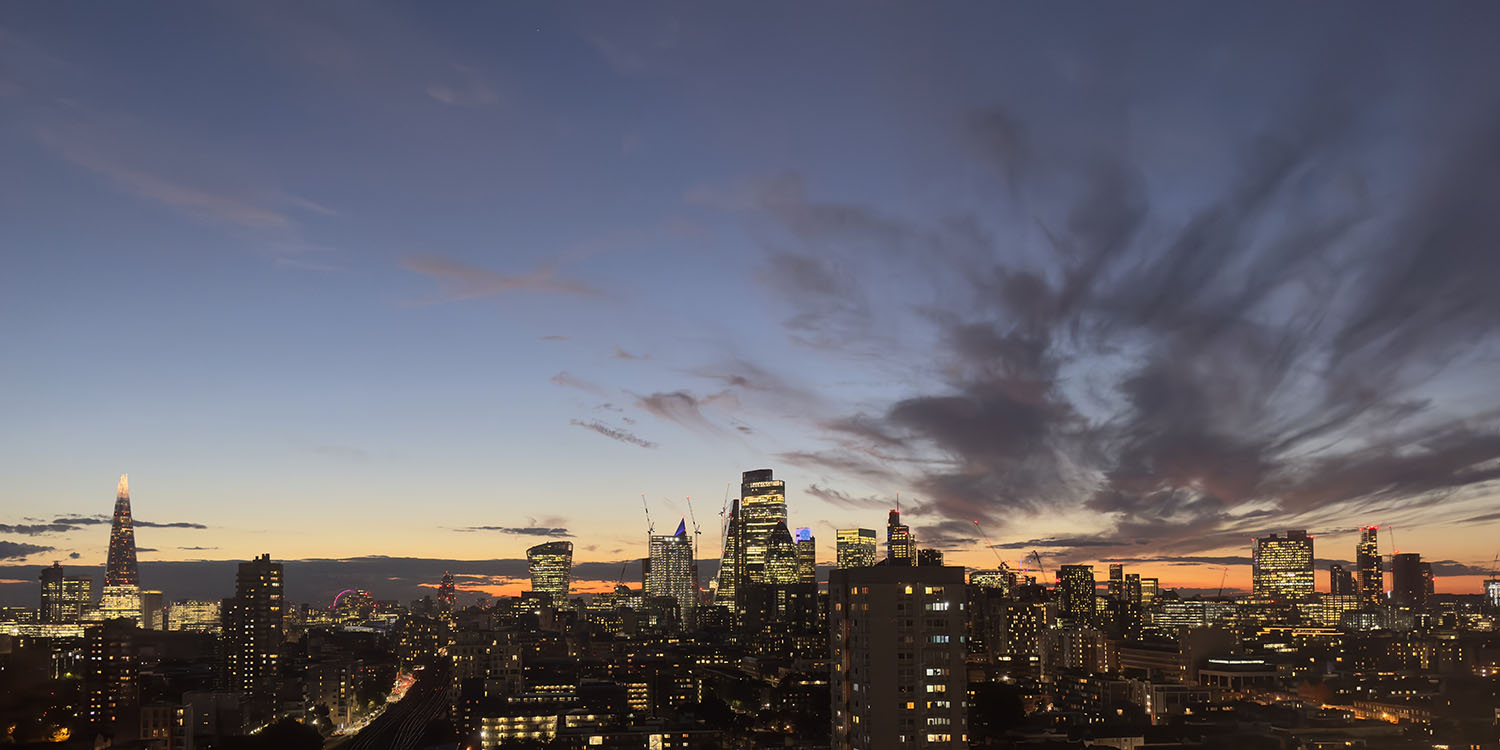
I’ve said before that I was unlikely to use the iPhone 14 Pro 48MP resolution personally, and indeed I stuck to 12MP during a recent trip. But I was of course still curious to see how much of a difference the megapixel count makes in real-world photos.
My tests did lead me to change my mind to a small extent – so now I’d say that I’d expect to use the 48MP capability on extremely rare occasions, rather than never …
Let’s talk pixels
The biggest on-paper differences between old and new phones, of course, is a larger sensor and 48MP resolution on the main camera.
A larger sensor is straightforward. The larger the sensor, the better the images. The sensor is 65% larger than its predecessor, which is significant in percentage terms, but still an extremely small sensor compared to dedicated cameras.
But the story doesn’t end there. When shooting 12MP photos, which remains the default, the iPhone uses a technique known as pixel binning to effectively turn each block of four physical pixels into a single virtual pixel. These virtual pixels are bigger than those used in the iPhone 13 Pro.
Switch on the 48MP capability, however, and now the pixels are smaller. That’s because the 65% larger size is now divided by four. The net result is that pixels are around 60% smaller than those on the iPhone 13 Pro.
You can read more about this here.
Why 12MP remains the default
I’ve always been a fan of Apple’s approach of fewer, bigger pixels, as that’s what gets the best results in low light. Smaller pixels mean more noise and less detail. So I was pleased to see that 12MP remains the default resolution for photos. Open the Camera app and take a photo, and you’ll get a 12MP file.
Indeed, enabling the 48MP capability is almost hidden. There’s no 12MP/48MB switch in the Camera app. Instead, you have to select ProRAW format, which is done by tapping the crossed-out RAW button.

This is, to me, a very sensible decision on Apple’s part – for two reasons.
First, and most obviously, 48MP images are much bigger than 12MP ones. Not just four times the size, as a typical iPhone user might expect, but generally around 20 times bigger! Here are examples from three of my photos:
- 2.5MB versus 49.7MB
- 3.6MB versus 69.9MB
- 3.6MB versus 61.9MB
If Apple used 48MP as the default, it would eat both on-board and iCloud storage at a terrifying rate.
Second, because 48MP images are shot in RAW format, users need to know how to process and edit these files. It’s not a useful format for a mass-market iPhone user, so it makes complete sense for Apple to have the button be a RAW one rather than a 48MP one.
An important note about RAW files
Before we compare 12MP and 48MP photos, we need to emphasize one key difference between shooting in JPG/HEIC and ProRAW.
With the former, the iPhone’s own image-processing software decides how to process the file. Sure, you can edit it afterward, but you’re editing a photo that has already been edited by the phone, to give the result Apple thinks most users would want to see.
You can use Photographic Styles to change the default editing the camera makes, but you’re always viewing a pre-processed image.
RAW images are different. Here, Apple hands over the actual data from the sensor, and invites you to process it as you wish. (When you view a RAW file on the iPhone, it effectively shows you a preview of how the photo would look with the standard processing, but the actual ProRAW file has none of these edits.)
As mentioned above, this makes it useless to non-photographers, as you have to be able to process the photo to your own tastes.
The “important note” about this is that when we compare 12MP and 48MP photos from the iPhone 14 Pro, we are comparing Apple’s standard processing with my personal processing choices. I have tried to ensure that I haven’t deviated too far from Apple’s own JPG processing, but you can’t (for example) say that the sunset is more vivid in one or the other.
12MP and 48MP photos were taken within a second or two, but they are handheld, so the framing isn’t precisely the same – however, I’m confident that in these conditions the tiny difference in framing would have no noticeable difference.
iPhone 14 Pro 48MP vs. 12MP
Okay, enough preamble, let’s take a look at the comparisons.
I’ve chosen low-light shots, as that usually is the greatest weakness of squeezing more pixels into a small sensor. When things get too dark, Apple makes the 48MP option unavailable, but the phone was quite happy with these shots taken shortly after sunset.
Photo 1
First, let’s take a look at what would be a typical size for on-screen or web viewing: 1,500 pixels on the longest side. First, 12MP JPG:
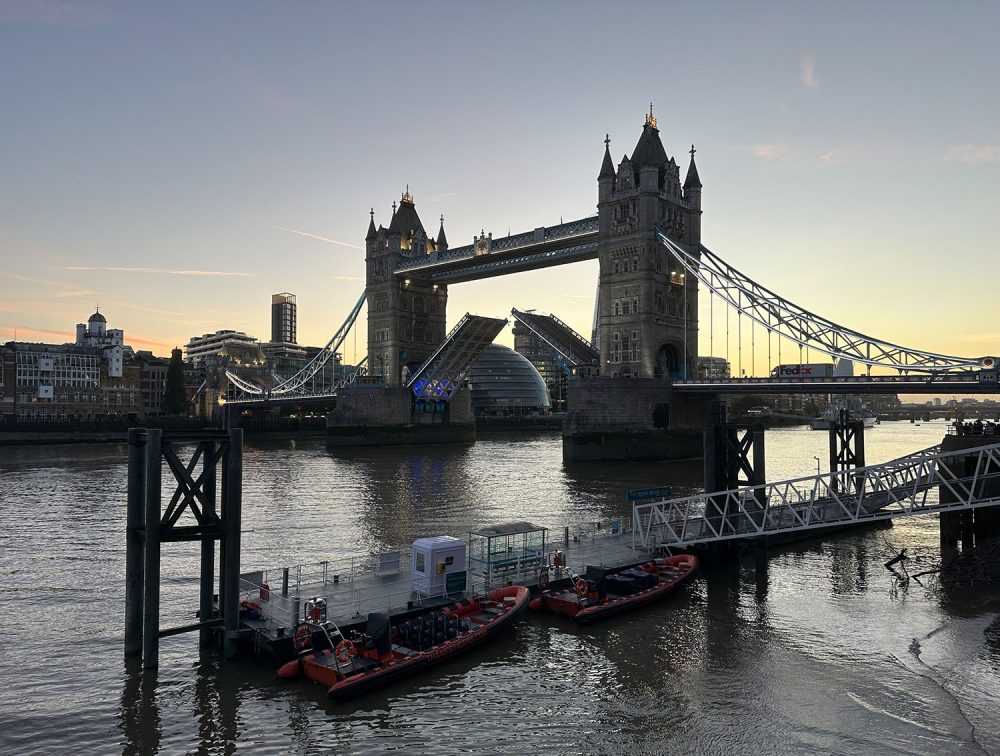
Then 48MP ProRAW:
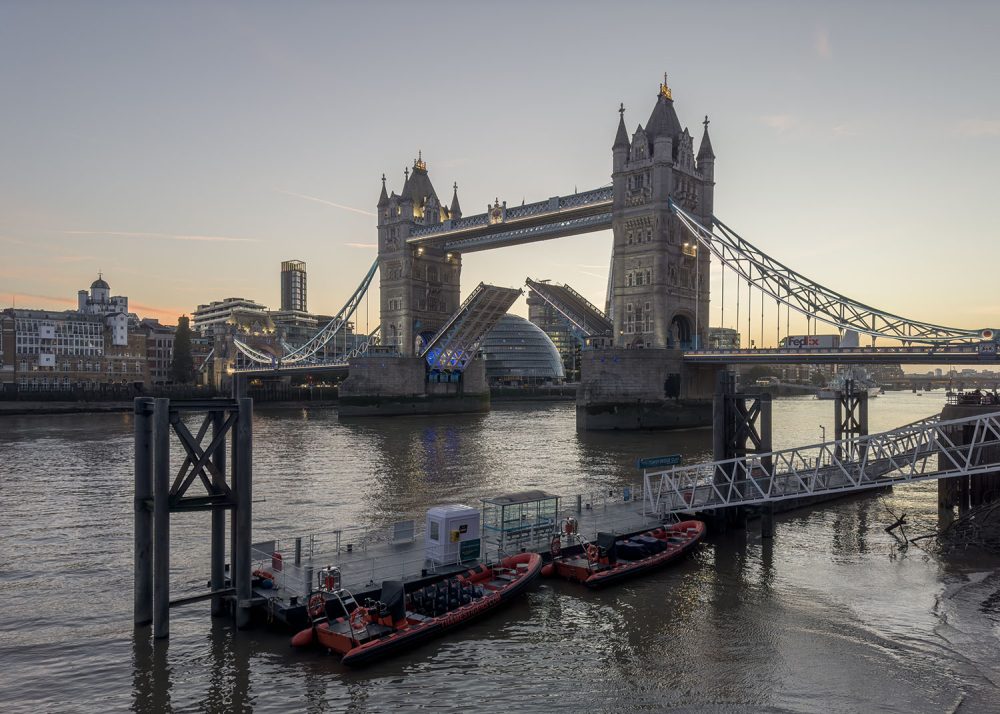
The main difference seen at this size is that in the processing. I’ve chosen to pull out more shadow detail, and I’ve also reduced the highlights to bring back the somewhat fuzzy yellow sky area on the right to a more realistic look.
But zoom in on the details, and we do see a significant difference. (The usual note applies for such extreme crops: We’re doing what’s colloquially known as “pixel-peeping,” where we take such an artificially close look that every flaw will be seen.)
First the 12MP image:
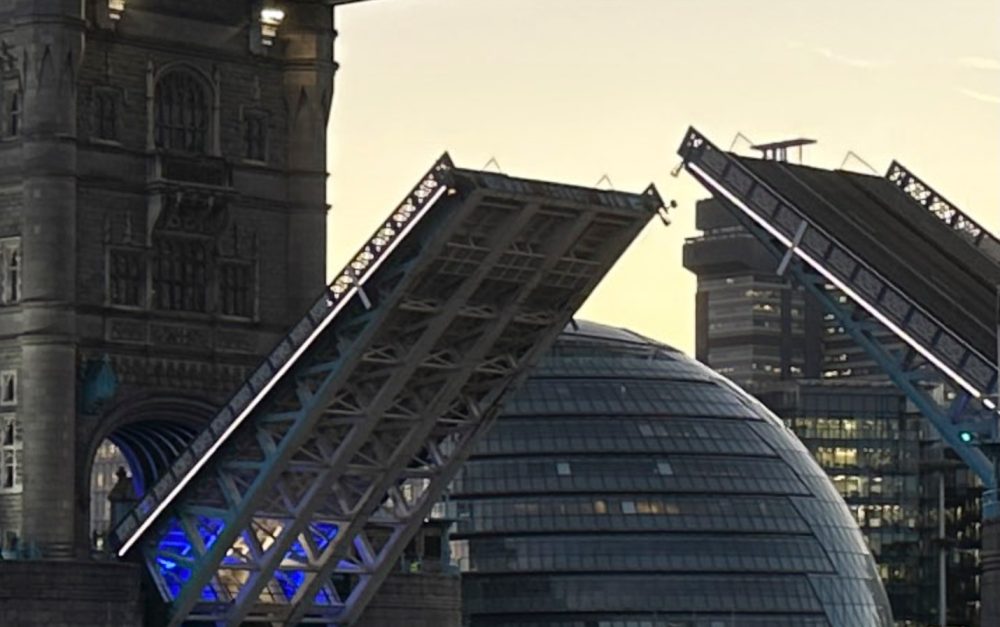
Then the 48MP one:

We can very clearly see a huge difference in clarity, and also in noise level, especially when you look at the decorative railings on the left arm of the raised roadway.
I again stress that we’re never going to view a photo so closely in real life. If you want to use one of your photos as a giant wall-print, you’re going to stand well back to view it. But there is an undeniable quality difference between the two, and if I were capturing a really spectacular view, or a photo with emotional significance to me, I might then opt for a 48MP shot.
You’ve probably also noticed that there’s a flaw in the 48MP version that isn’t present in the 12MP one: a red fringe in the gap between the roadway and the bottom of the railing. This is the sort of artifact that can occur when the pixels are really small. So it’s not a simple case of 48MP photos being better than 12MP ones; there are often trade-offs.
Photo 2
In this shot, there’s a little less light (taken 14 minutes later, and through glass), and the results are interesting …
12MP:
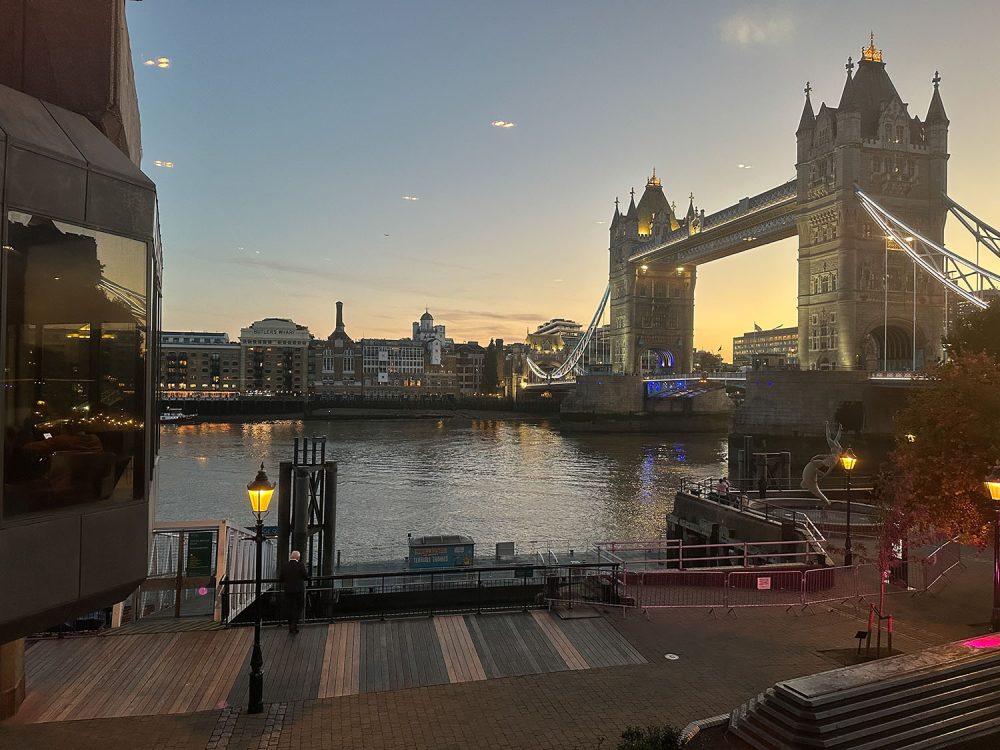
48MP:
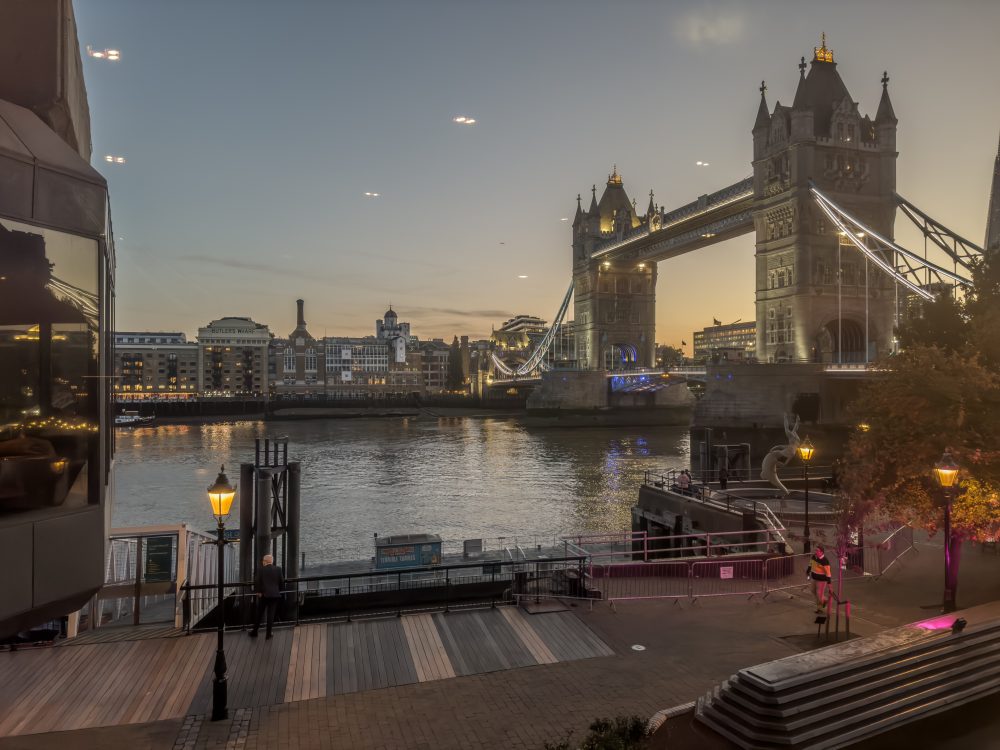
So much so that I had to triple-check I’d labeled the photos correctly (using the passage of the plane as my guide). The 12MP image actually looks noisier than the 48MP one, which is the opposite of what I expected. This can be very clearly seen in the crops, shown here side-by-side, with the 12MP image on the left:
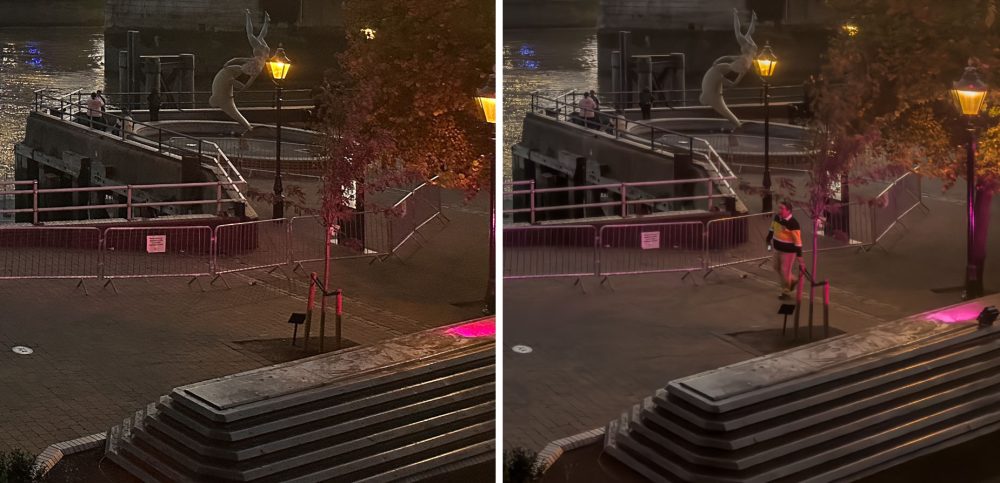
Perhaps the pixel-binning algorithm needs some work?
Photo 3
Finally, we have a photo I take rather often, with different skies. Again, at normal web viewing sizes, I’d say the most noticeable difference is that I’ve pulled up the shadows and dialed down the highlights a little more than the iPhone did.
12MP:
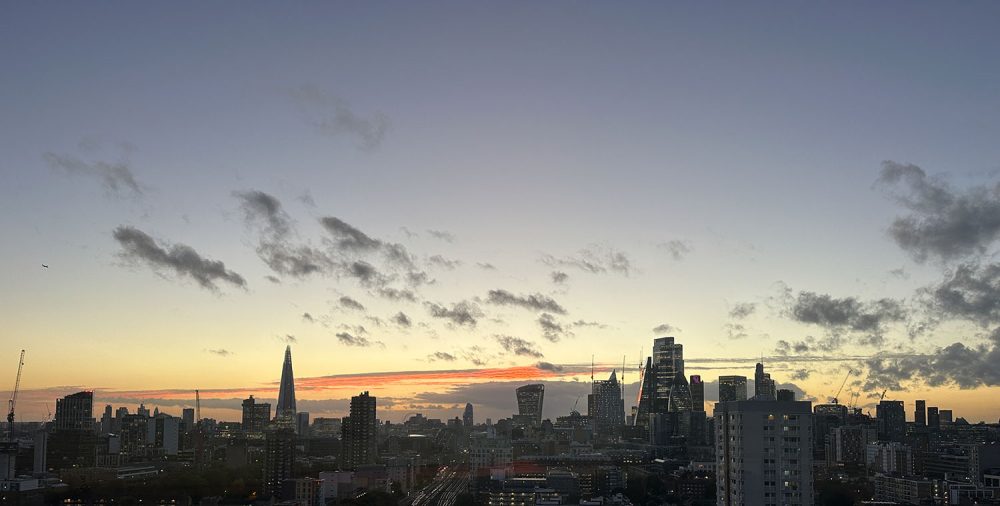
48MP:

Top comment by Ricardo Gomez
When we zoom right in, we do see a significant amount more detail in the 48MP shot. Again, side-by-side, with the 12MP image on the left:
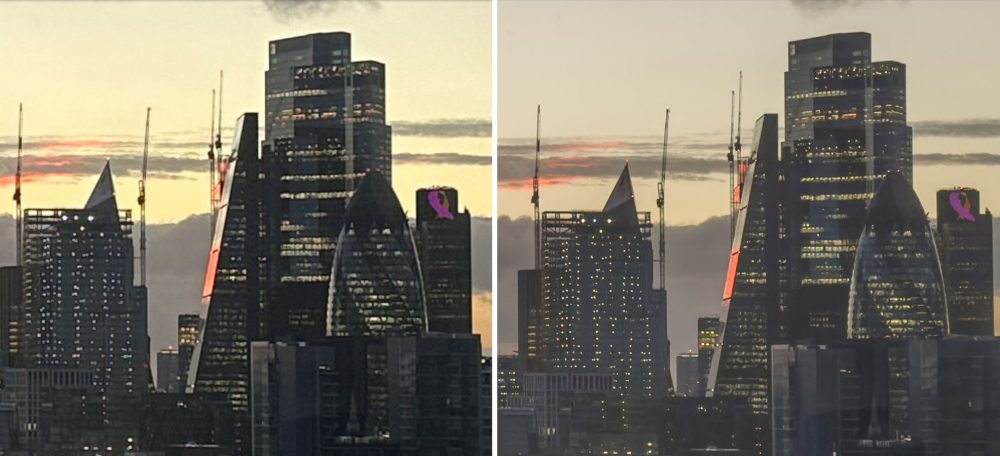
However, I think this one makes my point: While the 48MP image has more detail, it’s still clearly a capture from a small sensor with a cheap lens. The difference between the two, to me, doesn’t justify the massive increase in file size, nor the extra work in post-processing.
I will, then, continue to shoot 12MP photos almost all of the time – but will very occasionally flip that RAW switch. How about you? Please share your own impressions of iPhone 14 Pro 48MP photos.
If you’d like to download the full-res originals to take a closer look, you can do so below. Note that you’ll need photo-editing software that can work with DNG RAW files.
- 12MP Tower Bridge open
- 48MP Tower Bridge open
- 12MP Tower Bridge through glass
- 48MP Tower Bridge through glass
- 12MP skyline
- 48MP skyline
FTC: We use income earning auto affiliate links. More.



Comments